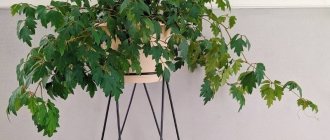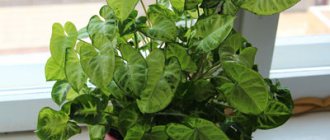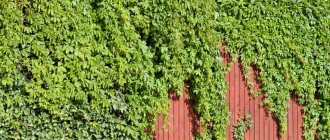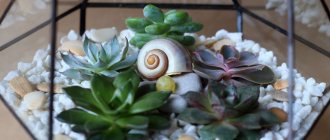Lianas are a special category of indoor plants. With flexible long stems, powerful or graceful, indoor rock gardens allow you to take landscape architecture to a new level. They are grown in amplitudes and on supports, on green walls and in cascades, used for camouflage and even to divide space. Lianas cannot become a real interior decoration without careful care. Any error in them will affect the condition and speed of growth, the density of the leaves and the beauty of the color. These are invariably ornamental plants that depend on their owners even more than bushy herbaceous stars.
Lianas are a special category of peaceful plants
There are many nuances and subtleties of growing vines indoors. Plants that have relatively long stems and can be experimented with using different shapes and gardening techniques require a little more attention than typical houseplants. Pruning, pruning, controlling the rate and direction of growth and straightening are some of the most important measures for caring for a vine.
But the basics - nutrition and watering - for these plants determine the degree of decorative success for many years. Most vines lose some leaves and bare the lower parts of the stems when there are moisture problems, and too much or too little nutrients irreversibly impair growth and development.
And capricious vines are more dependent on humidity than ordinary perennials. But at the same time, vines are the most sustainable, durable and reliable landscaping option. Apart from basic, impeccable care, they often require little effort.
Creepers constantly add volume, open up new possibilities and are suitable for both beginners and experienced florists. Lianas require regular, systematic care and respond gratefully to attention and care. There are general rules for growing them, which should not be forgotten under any circumstances.
Individual approach
Each vine is unique and needs its own special care plan. And the easiest way to avoid mistakes is to document the procedure schedule and installation characteristics. A small sign or tag on the pot with general information about preferences, a moisture indicator, a log of fertilizing, watering and replanting is not only the best way to provide the plant with everything it needs, but also the easiest way to identify and analyze errors.
The choice of plant must be approached responsibly, and not rely only on impulse or appearance. Vines, even if they are elegant hanging plants, are plants that bring joy to the home for many years. Doing your research, checking the details provided by the seller, and assessing your options and your home based on your plant preferences will help you get off to a good start in using climbing plants. After observing the quarantine period, the plant quickly and painlessly adapts to the interior.
The most important aspect of the custom approach is pruning. This is done in accordance with species-specific recommendations and after careful analysis of the plant itself. But watering, fertilizing, replanting, and even choosing conditions should be carried out taking into account the requirements of a particular plant.
Scindapsus. Dennis Amit
Diseases and pests
Almost all the diseases that indoor vines can suffer from are caused by the water balance being disturbed.
When a vine weakens before our eyes, its leaves fall off, most likely its roots have begun to rot. This happens when you water too much, when the water in the pot constantly stagnates. Another reason is a change in pH when the soil becomes too acidic for the plant.
But leaves can also fall due to the fact that the air in the apartment is too dry. In this case, the leaves will dry out before they fall.
A lack of moisture in the air often leads to pests infesting the plant. It could be an aphid, a scale insect. Spider mites also often appear. Getting rid of these pests is not easy. You will have to spray with insecticides several times. Excellent drugs for this are Fitoverm and Actellik. Therefore, it is best to avoid the development of vine disease than to eliminate its consequences later.
If you follow all the recommendations for caring for vines, you can grow an excellent climbing plant that will decorate your apartment and be the real pride of any gardener.
Watering stages = development stages
The water needs of all indoor plants vary depending on the stage of development and time of year. With vines, it is important not only to maintain a regular watering schedule, but also to adapt watering to changing moisture requirements.
During active growth, all vines need much more water than during the dormant period. Excessive watering in the summer and during the active growth of young shoots can be forgiven by the vine, but it will never go away in the winter. With drought it’s the other way around—it has less effect in winter than in summer. For all vines, complete drying out of the soil is a phenomenon that should be avoided. If, as a result of a combination of circumstances, the soil becomes very dry, instead of resuming watering, moisten the soil by submerging, allowing all excess water to drain.
The surest way to avoid troubles associated with improper watering is to constantly check whether the soil is dry. Watering recommendations for each houseplant also indicate how long the soil should dry out between waterings.
And a few more tips for watering vines indoors:
- Water from trays must always be drained;
- Lianas prefer morning watering;
- When watering vines, be careful not to wet the base of the stems and avoid wetting the leaves.
- Lianas are sensitive to the properties of water, so you should not ignore the instructions for watering with soft or settled water given for each species;
- reduce and resume abundant watering gradually, not abruptly, trying to gradually adapt the plant;
- The water temperature for vines should not be equal to the temperature of the air and substrate, but exceed it by several degrees, especially during the period of active growth;
Watering, humidification, temperature and fresh air
It’s not for nothing that I combined all these parameters into one group - they are all interconnected. For indoor vines, the ideal conditions are moderate temperatures, good ventilation and moist air.
The temperature in winter should not fall below 16°C. I don’t think it can be colder than 16°C in city apartments, but if yours is cooler, you will need to turn on additional heating, but not in close proximity to flowers. In summer, the temperature should ideally not exceed 20-22°C, and the heat must be combated by constantly spraying the plant with cool water. In winter, by the way, you also need to moisten the vines, but the water for spraying should be warm.
watering indoor vines in the morning or evening, but not during the day. And you can spray in the same mode, even 2 times a day. Watering is carried out as the top layer of soil dries. Try not to over-water the plant, especially since under the lush head of leaves the soil can remain wet for a long time. Water for watering indoor vines should not be cold, otherwise the root system may become sick and rot.
If your house is dry, the heating system greatly heats the air in the apartment, then you will have to give up the idea of keeping vines in the house - they will constantly get sick and waste away. I once grew ivy not far from the radiator - it did not grow, but barely survived. And in the summer, when I took it out into the fresh air, the ivy grew and became bushy.
Lianas love fresh air very much. But this does not mean that they are not afraid of drafts. Place the climbing plant under the wall so that the air flow will refresh it, but not make it cold.
And, of course, a common feature of all vines is the need for moist air. You already know how to spray a vine, but indoor vines need a shower at least once a month. It is difficult to remove dust from their leaves, so it must be washed off. If this is not done, spider mites may settle on the plant.
When bathing the vine in the shower, turn the water slightly warm, but keep in mind that the water pressure should not be strong, otherwise you risk breaking the leaves and shoots.
- Tips for caring for dracaena (video)
Air humidity directly determines the condition of the leaves
Indoor vines have a very large vegetative mass. A large number of shoots and leaves makes the plant more susceptible to deviations from a comfortable humidity level. While in other plants fluctuations in humidity and short periods of dry air can be compensated for, vines usually react immediately, starting with drying out the tips of the leaves and ending with weakening of growth. The more the vine loves moisture, the more carefully you need to monitor the indicators.
Spraying is necessary for all vines without exception, except those whose leaves are covered with hairs. By refreshing leaves and increasing air humidity, it also prevents plants from overheating and allows them to compensate for evaporation to a much greater extent. Always spray in the morning and never in direct sunlight.
Apply only at room temperature or above. For vines that do not tolerate dry air, spraying alone is not enough. This can be supplemented or replaced by installing humidifiers - trays with wet moss or expanded clay, special devices.
Cissus. hopefulauthor
Hygiene is important, regardless of size
Regardless of the type of vine, no matter how gigantic it may be, the plants must be protected from the accumulation of dust and dirt. At least once a week, depending on which method is suitable for the leaves, the plant should be vacuumed. If the plant is large enough, has glossy leaves and is not afraid of moisture, it is better to give it a shower.
Careful control is as important for indoor vines as for any other care item. As part of spraying or cleaning, regular inspection of foliage is mandatory. Look for any abnormalities, including discoloration, on the undersides of leaves and stems. Even if there are no signs of disease or pests, early detection of problems will make management adjustments easier.
All grapevines depend on access to fresh air. Stagnant and uncirculated air not only leads to greater accumulation of pollutants, but also maximizes the risk of pest infestations. Rooms for vines should be regularly ventilated to protect plants from temperature changes and drafts. Unless they are one of the fussier species, it is recommended to place them on an open balcony - if not in the garden - for the summer so they can enjoy the fresh air.
Loosening, as for garden plants
For vines growing indoors, the soil should be loosened periodically to prevent compaction and maintain optimal air and water permeability. Regeneration of the structure of the top layer of the substrate is especially important for large plants that are not replanted every year.
Over time, in the absence of scarification, actively growing vines suffer not only from soil compaction and even crust formation, but also from soil contamination. With regular loosening, you can prevent problems with the soil and remove plant debris in a timely manner. Weakening the substrate for indoor vines has its own rules:
- This should be done superficially, to a depth of no more than 1.5 cm;
- Very carefully loosen the soil around the sides of the pot, being careful not to disturb the shoots or roots.
Stephanotis. jmchapp
Cissus rhombifolia
Initially I wanted greenery. A lot of. So that it trails along all the walls, hangs from somewhere. Flowers are optional. For some reason, I am indifferent to flowers indoors, in contrast to flowers on the site. The first to appear was Cissus rhombifolia “Ellen Danica” - a completely “indestructible” plant.
Cissus rhombifolia 'Ellen Danica'. © shawburygardencentre
He grew up near the south window, experiencing the summer twilight quite calmly due to the lilacs covering the window. And he doesn’t care about the winter dry air. For the first two years, it gracefully hung from a hanging flower pot, growing in green mass. In the third year, I moved to a floor-mounted one, which was noticeably more spacious, and received support on the wall. A year later, using his tendrils to pull himself up on the support, he reached the ceiling, caught hold of a curtain and began to explore the ceiling space, throwing all his rubbish from there onto the floor.
I had to wipe, spray and collect dried leaves from a stepladder. Leaves dry out most often due to excess moisture. Drying it is difficult, but pouring it is easier. There was a precedent in a neighboring department at work: the leaves began to dry out and compassionate colleagues, understandably, increased watering. By the time the main “flower grower” returned from vacation, the liana was half bald and looked very sad. They barely pumped it out.
So, my cissus occupied a third of the wall and part of the ceiling of a rather large room, hanging from everywhere and collecting all the house dust. At the same time, he looked very cheerful, especially after wiping and spraying. I never got sick from anything, growing wildly and clinging to whatever came my way.
Since it clings tightly with its tendrils, it is impossible to move a branch or shoot with little effort; you have to mercilessly cut the tendrils, and sometimes even the stems. Trimmed and finely chopped (15-20 cm) shoots readily and quickly take root in water. Since light is not particularly needed for rooting, vases with green cuttings of vines are located throughout the house, even in the hallway.
In the fourth year of growing after returning from vacation, having collected all the garbage that the cissus had thrown up during my absence and wiping the leaves from dust, I thought: maybe I can get by with less greenery in the room? Some kind people showed up in a nearby office building and took my entire plant. And they even dragged it to the place and hung it up without much damage.
Micro and macroelements are equally important
When fertilizing domestic vines, it is difficult to make a mistake: in order for the plant to receive all the necessary nutrients, it is enough to follow the instructions for the type of fertilizer, as well as the frequency and period of fertilizing. However, when caring for indoor vines, a serious mistake is often made: when choosing fertilizers, only the ratio of macroelements is taken into account.
For actively growing and heavy plants, trace elements are no less important than nitrogen, potassium or phosphorus. When signs of individual nutrient deficiencies appear, nutrients should be applied as soon as possible, and when choosing the type of fertilizer, always use products specifically formulated for grapevines or a complete multi-nutrient fertilizer.
Calcium is important for the vine to ensure growth and formation of young shoots, magnesium to maintain uniform color, iron, which is also responsible for the growth and quality of leaves, as well as sulfur, copper, molybdenum and manganese.
It is not recommended to use long-acting fertilizers for vines: the risk of uneven absorption of nutrients for them is much higher than for other indoor plants. In the case of climbing plants, it is better to reduce the concentration of fertilizers, but fertilize more frequently, rather than using high concentrations.
Formation of indoor vines
Giving the growing vine direction and shaping the exterior is a very important moment in caring for the plant. And since you have started a vine, you will definitely need a support, potted or wall-mounted. Climbing plants can form themselves by entwining a support or climbing a wall, but it’s better if you do this. To do this, the branches that you want to grow need to be pinched in the area of the apical shoot so that lateral shoots will appear.
If you want to get a long central braid branch, then constantly wrap it around the support in the direction you want and carefully fix it - I use small children's crab hairpins for this.
If your indoor vine (for example, Passiflora) crawls on its own using tendrils, control its progress and remove excess tendrils in time so that the vine does not stray from its route.
Transplantation is carried out only upon request
Only young vines should be replanted each year. The older and larger the plant, especially if it is formed on supports that are difficult to transfer to other containers, the less often it needs to be replanted, postponing this until the roots have completely mastered the substrate.
If the vines grow quickly, roots appear in the holes within a few months, and the plant itself does not tolerate containers that are too spacious, do not wait for a favorable period for replanting in the new spring, but replant then and as often as necessary, up to several times a year.
Passionflower. T. MA
Epipremnum aureus
Epipremnum aureum is capable of growing more than 1 m of shoots per year and is the most popular of the epipremnum scindapsus. This is perhaps the most common and versatile vine.
Young heart-leaved leaves up to 20 cm in length, most often decorated with variegated spots of white or golden hue, are replaced in adult plants by large leaves with numerous slits very rarely. At least in indoor format. Climbing thin shoots, clinging to supports with adventitious roots, even allow you to create bizarre figures on supports.
Epipremnum preserves the beauty of its patterns only in soft, bright lighting. And does not tolerate waterlogging. But standard care for heat-loving epipremnum does not include the requirement to create tropical air humidity.
Epipremnum aureum
8. A healthy vine starts with a quality substrate
The soil for vines should be selected individually depending on its reaction, composition and mixture ratio. However, there are general criteria for the substrate in which climbing plants are grown indoors. The soil must be nutritious, airy, loose in structure, not subject to compaction over time, sufficiently coarse-grained and permeable.
Soil structure is determined by the type of root system, choosing light soils for plants with thin and weak roots, medium soils for fast-growing vines and heavy soils for bushy vines with thornless stems and strong rhizomes grown in the largest containers.
For any vine, loosening and disinfecting additives such as charcoal, wood ash, moss, bark, vermiculite, perlite, expanded clay, etc. are welcome.
Lianas require high drainage. Even with the best care, vines, especially hanging ones, are much more likely to get wet than ordinary indoor plants. Drainage can prevent many problems, stabilize conditions, and relieve pressure on containers when growing in hanging pots.
Monstera deliciosa
We also needed something monumental for the living room. Friends gave the monster a delicacy. In a pot, the young monstera is a cute plant with large, whole, glossy leaves. And nothing foreshadows further green aggression.
Monstera deliciosa. © imgur
The monstera spent the first year after appearing in the house on a closet 1.5 meters from the south window. Not the brightest place and far from the most humid, especially in winter. At first, she produced leaves at a rate of one sheet every six months.
A year later things became more fun. With the appearance of the first relatively dissected leaf, both existing shoots perked up and began to grow leaves that were increasingly larger and more carved.
Monstera moved into a 7-liter floor planter and acquired a shaggy coconut fiber support, 120 cm of which lasted her exactly a year. Each time the leaves became larger and more holey, the petioles lengthened and thickened. Aerial roots emerged from the stems in thick cords.
In general, the vine began to master the corner allocated to it on the side of the south window. She reached the curtain (2.7 m) in three years. By this time the leaves were already 40 centimeters in diameter, the aerial roots were more than a meter and it occupied a volume of approximately 1.2 x 1.2 x 2.7 m. And it was already sitting in a 20-liter pot. The stems have thickened to 2 cm in diameter. A monumental plant that delights with its power.
To maintain impressive condition, it requires a large pot and high humidity. Aerial roots that reached the floor had to be stuck into the ground, and the leaves had to be regularly wiped and sprayed. I don’t like cutting houseplants, but Monstera left no other choice - the tops had to be shortened. More precisely, to shorten it, since new stems were growing from the upper buds.
For me it did not bloom or bear fruit. Apparently 1 hour of sunlight in the morning was not enough for her for these purposes. She didn’t get sick with anything, and no one ate her.
9. Transplantation should be carried out with utmost care.
Before transplanting, evaluate the condition of the plant and your own capabilities. Large vines, due to their heavy weight (and often the medium size of internal vines), usually cannot be transplanted alone. The number of workers must be sufficient not only to cope with the heavy root ball, but also to protect all shoots and leaves from injury.
It is best to replant each and every vine with minimal root contact. Only the top and loose layer of soil should be removed from the root ball. If the soil needs to be completely replaced, the root ball should be carefully loosened and the roots should be soaked in a weak solution of a fungicide (at least potassium permanganate).
If the roots are exposed, trim any roots that are too long and remove any damaged or dry areas. For plants with a very dense root ball resulting from a long absence of replanting and almost complete absence of soil in the root ball, make longitudinal cuts. Even if the vine is not capricious, the absence of unnecessary trauma to the roots will allow it to adapt and grow faster.
The day before transplanting, the vine should be watered to facilitate the procedure. When replanting, act quickly and do not allow the roots to dry out. It is recommended to control the level of submergence by maintaining the plant at the same level and ensuring that the root collar is approximately 2-3 cm below the edge of the pot, so that the top layer of soil can be replaced in the future without replanting.
The vine should be positioned exactly in the center of the pot, without moving, which could make the container unstable as the plant grows. The substrate should be poured in small portions, leaving it loose and not too compacted.
Hoya. Silas Price
Syngonium auricular, or eared
Syngonium auritum is capable of growing by 70-90 cm per year. Growth is especially impressive in cuttings, which transform before our eyes, constantly delighting with new leaves. Of course, the syngonium lags behind the epipremnum. But it will still appeal to those who expect quick results.
Syngonium auricularis received its name due to the special shape of the lateral segments of large, up to 28 cm long, tripartite leaves. This evergreen liana with shiny leaves surprises with its very long, up to 50 cm, cuttings, dark, bluish color with light veins. Many varieties have a purple backside. The plant is characterized by different shapes and sizes of leaves of different ages. The shoots are long, up to 5 m even in cultivation.
This vine is grown only on supports. It thrives in the warmth of room all year round; this species is afraid of cold weather even down to 18 degrees. But it grows well both indoors and on a northern windowsill, requiring average soil moisture and adapting well to low humidity.
Syngonium auricular, or eared (Syngonium auritum). © yuszhy











